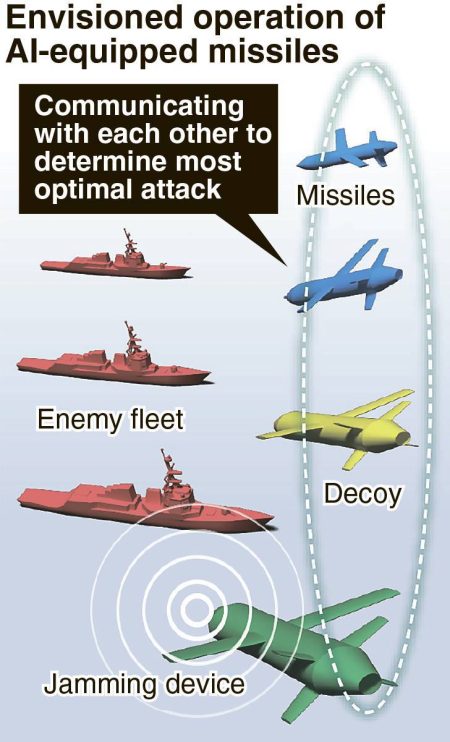November 11, 2025
TOKYO – The Defense Ministry next fiscal year plans to start developing a control system that would enable multiple anti-ship missiles with AI-equipped warheads to communicate with each other.
The envisioned AIs would calculate optimal flight paths and enhance the Self-Defense Forces’ ability to counter distant enemy vessels.
The ministry also intends to strengthen Japan’s deterrence, thereby discouraging attacks on the country.
Under the current control system, missiles are guided toward distant maritime targets one at a time from the ground. As a missile approaches a target, it uses its own radar to identify an enemy vessel and destroy it.
In recent years, the range at which guided missiles can travel has increased significantly. “Standoff missiles,” which are capable of counterattacking from beyond the range of an enemy’s missiles, now have ranges exceeding 1,000 kilometers.
The longer a missile is in the air, the higher the risk of interference. Enemy vessels, for instance, can take evasive actions or prepare for interception.
Under the new system, the missiles are envisioned to communicate with each other during their flights. Jamming devices, which disrupt enemy communications, and decoy missiles, which lure interceptors, would also be equipped with AI, enabling these components to coordinate with the guided missiles.
Information from the components and missiles can be updated and their flight paths flexibly altered even during flight. The system, therefore, is designed to determine the most effective combination of tactics.
To assess the project, the ministry has earmarked ¥200 million in its fiscal 2026 budget request. Over the next three years, the ministry aims to assess the status and cost-effectiveness of higher-performance AI and is eyeing fiscal 2029 at the earliest for practical application. Research and development for the system will be reviewed in accordance with the ministry’s guidelines for risk management of AI-equipped defense equipment.

GRAPHICS: THE YOMIURI SHIMBUN

